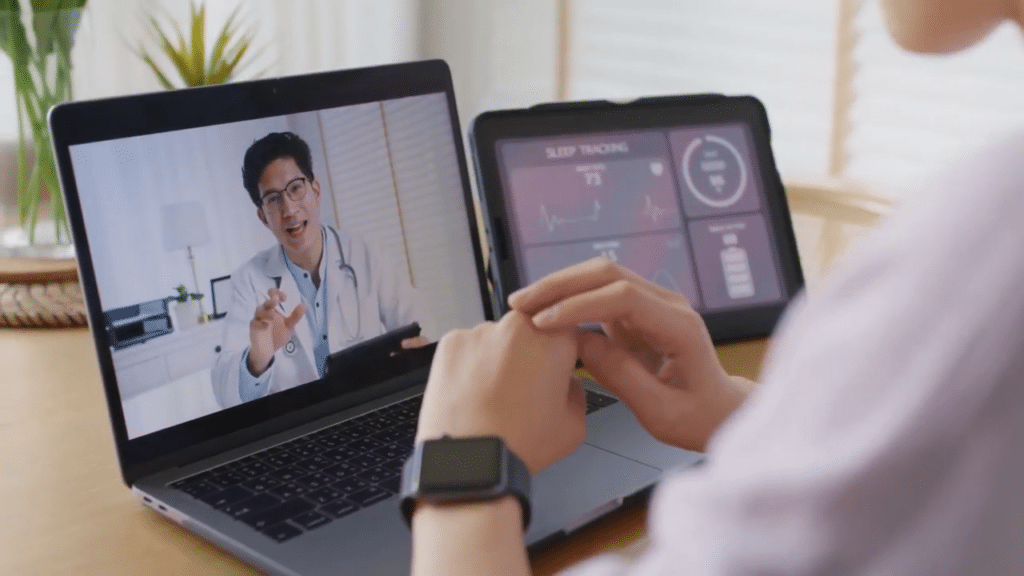Are your nurses having a hard time keeping up with all of the data recorded by a remote patient monitoring (RPM) program? What about emergency data that comes in the middle of the night, or cases where the patient observes a serious symptom related to a chronic disease? Consider using outsourced nurse telehealth to alleviate this challenge and even generate additional revenue for your practice.
Along with dedicated nurses who can evaluate your patient data at a scheduled time, TriageLogic offers a robust RPM program where nurses in our medical call center can review your patients’ vitals 24/7. These nurses act as an early warning system for identifying changes that could negatively affect patient health, and can notify both patients and your providers when symptoms begin to worsen.
Every Remote Patient Monitoring (RPM) program has two main nursing components:
1. Daytime Component. During the day, nurses monitor abnormal values and maintain contact with patients. This ensures continuity and access to care, allowing for adjustments to optimize health and schedule appointments with doctors as needed.
2. 24/7 Emergency Component. What happens when a critical value comes in late at night or on weekends? This is why every RPM program needs a 24/7 component for emergency values with trained registered nurses. These are cases where patients may need immediate care in an urgent care or ER setting, and nurses must be available quickly and trained to handle them.
Not only can patients receive high-quality care from the comfort of their homes, but your practice will also be able to substantially improve health outcomes and lower the associated costs at the same time. Read on to learn more about these benefits.
How RPM Works
If you don’t currently have an RPM program, but you’ve been actively considering it, here’s a quick overview of how this service works.
Patients use wearable sensors that continuously track key vitals and share that data directly with your practice. This is an exceptionally helpful tool for those patients who are battling chronic conditions and need to be monitored throughout the day. It’s also a boon for those who live in areas where it may be difficult for them to reach their providers in person.
RPM has the ability to review many types of symptoms and conditions, from high blood pressure and diabetes, to asthma and sleep apnea. It also integrates with many of the tools that patients are already used to, including those that measure weight, pulse oxidation, glucose, and blood pressure (although some conditions may require additional devices). The only difference between what your patients would have experienced before RPM and after is the inclusion of a wearable sensor, which they will need instructions about how to use and maintain.
Benefits of Telehealth
Outsourced nurse telehealth enhances RPM management in three key areas.
Improved Data Review
RPM devices store a lot of data, which can be difficult for many practices to review when they’re busy or understaffed, or when that data comes in after normal office hours. Outsourced telehealth provides a group of registered nurses who understand the symptoms to look for and can perform that review at any point during the day, looking for data that may indicate worsening health conditions.
Seamless Patient Care Coordination
Another reason outsourced nurse telehealth is so important is because this service is staffed by registered nurses who understand how to coordinate with patients and providers when patient health deteriorates. Using triage protocols, nurses are able to virtually evaluate patient symptoms and provide proactive care advice.
In short, practices are able to respond to patients’ needs faster, and with less burden on their internal staff. Then there’s the financial impact to consider.
Revenue Generation
When coupled with outsourced nurse telehealth, RPM represents a significant revenue generator. CMS will reimburse companies up to $120 per patient per month if patients meet the appropriate criteria and billing codes.
Enroll 50 patients, and you have a potential $72,000 a year — and that’s just in reimbursements!
Consider the time you save by being able to remotely check in with patients, discuss their symptoms, or have their after-hours needs addressed by RNs, all without requiring in-person visits. This service also removes the burden from your internal nurses with having to oversee data management and patient outreach.
RPM Concerns
Some practices have been hesitant to adopt RPM because they worry about the implementation time and costs involved, as well as liability and data security.
TriageLogic’s services address all of those concerns. We customize an RPM program that is specific to your practice, with a clear understanding of how to implement it without compromising your current operations. We have nurses who can walk your patients through common questions about their wearable sensors, and how to make sure they’re working properly. Not only are our nurses available 24/7 to review that sensor data, but they can also address your patients’ needs — thus reducing potential liability.
Finally, we care about the safety of patient data, which is why HIPAA-compliant cyber defense is as important to the development of our products and services as the ability to integrate with your in-house software.
Let’s Talk About Your Outsourced Nurse Telehealth
Are you ready to see how outsourced nurse telehealth and RPM can be a cost-effective solution for your patient care? Contact us today to learn more!
About TriageLogic
TriageLogic is a URAC-accredited, physician-led provider of top-quality nurse telehealth technology, remote patient monitoring, and medical call center solutions. Founded in 2007, the TriageLogic Group now serves more than 22,000 physicians and covers over 42 million lives nationwide.





